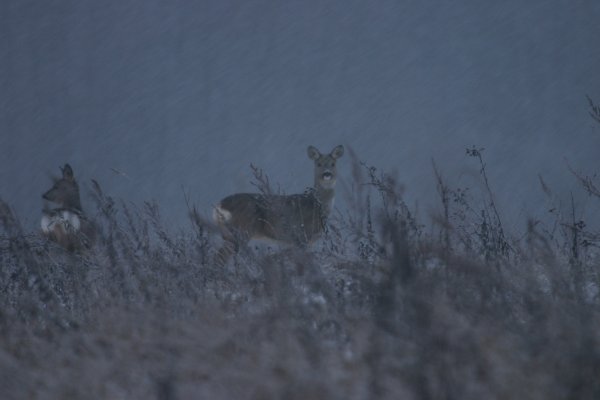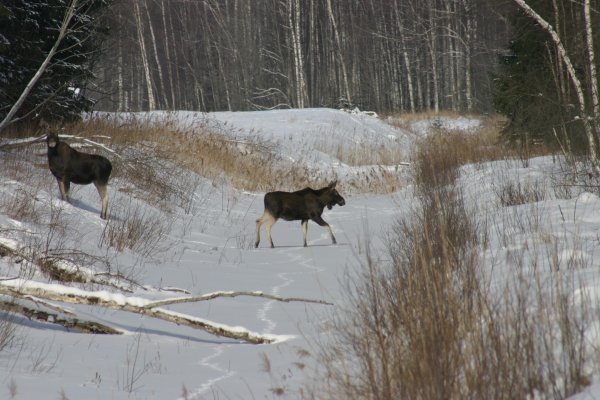Reading the Footprints of Forest Dwellers
Winter is a quiet time when the earth under the feet is frozen and the time of rapid changes in nature has calmed down. Migratory birds have gone to warmer places, bears, hedgehogs and a number of other animals have gone for their winter sleep. However, when entering the forest, more and more often one can hear and see the hustle of forest animals in search of food or experiencing mating. What one will see, depends on their attentiveness and skills to "read" the footprints of the forest dwellers.
"If you recognise animal footprints and know their habits, the snow-covered forests, fields, meadows and shores may be read like a book. Where a herd of wild boars has crossed a fire-break, where a male wolf during the mating season has marked a hillock on a roadside - all these signs demonstrate the presence of a variety of fauna and certain regularities in the environment," says Uģis Bergmanis, Senior Environmental Expert of JSC “Latvia's State Forests” (LVM).
Footprints may be left in different ways, not only as prints in the snow or in the ground, but for example, also using the teeth. Beavers are the authors of the most explicit teeth signs, but they are not the only ones.
Wild boars, which can often be seen in herds, take special care of their younger generation, also when visiting private yards. It is almost impossible not to notice traces left by wild boards - they are able to trench the ground for up to 20 centimetres in search of insect larvae and plant roots. The leading mother of the heard is the main digger, and piglets search the top layer of the loosened soil.
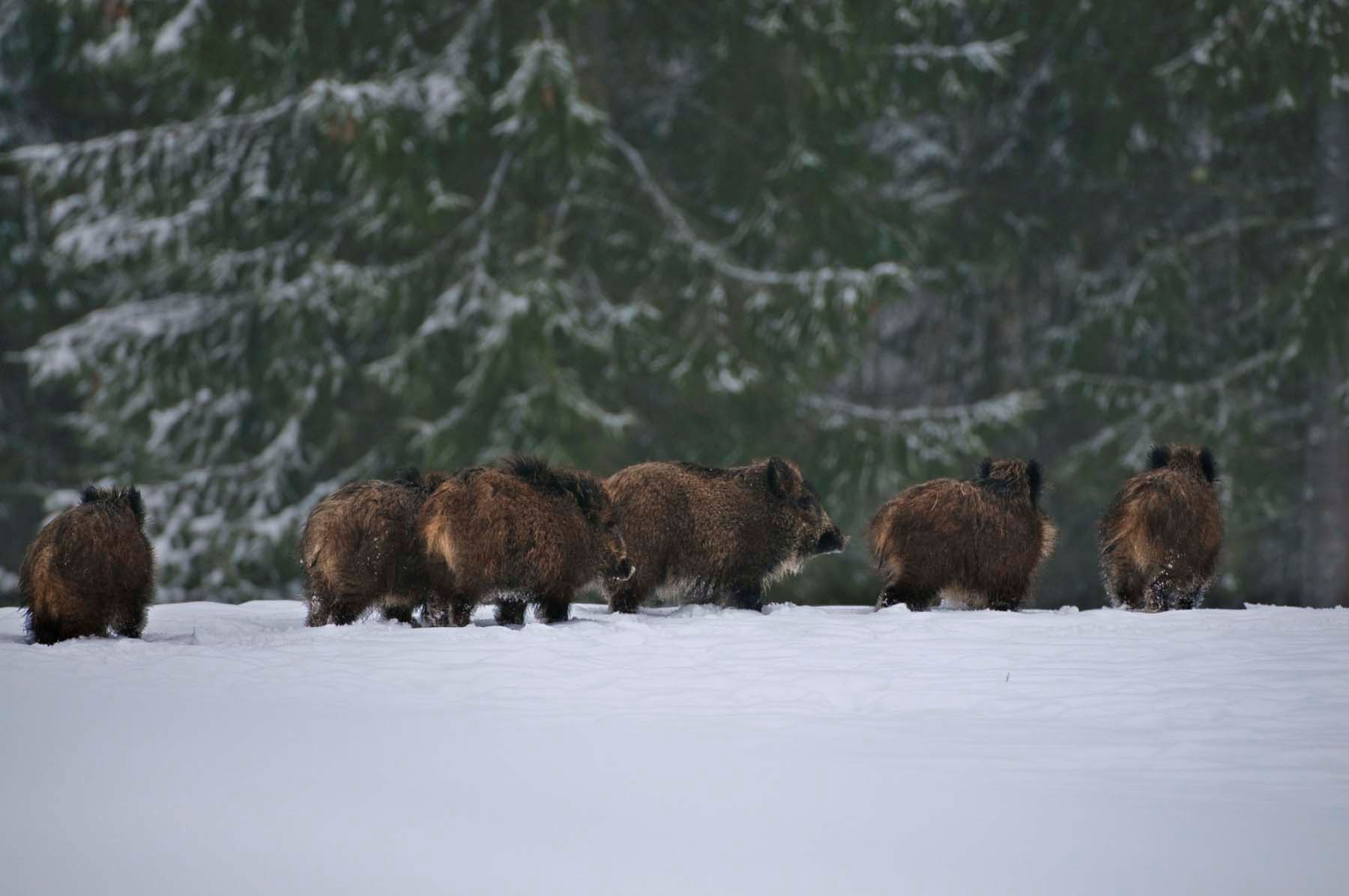
In turn, male boar demonstrates its muscles and strength, making a line in a tree by using its tusk - the higher the mark is made, the more careful smaller animals must be.
For wolves, winter is an active mating time. They walk around the whole territory, marking it and searching for food. At night and in twilight wolves walk along the forest paths and urine-mark almost everything they encounter on their way - be it a grass hummock or a tree stump. Male wolves always paw the marked place. Occasionally during the mating season - from January to February - one can even hear howling of wolves. Also lynx males mark their territory during their active mating time in March. Even in the light hours of the day one can her their growling, which sounds like a roar.
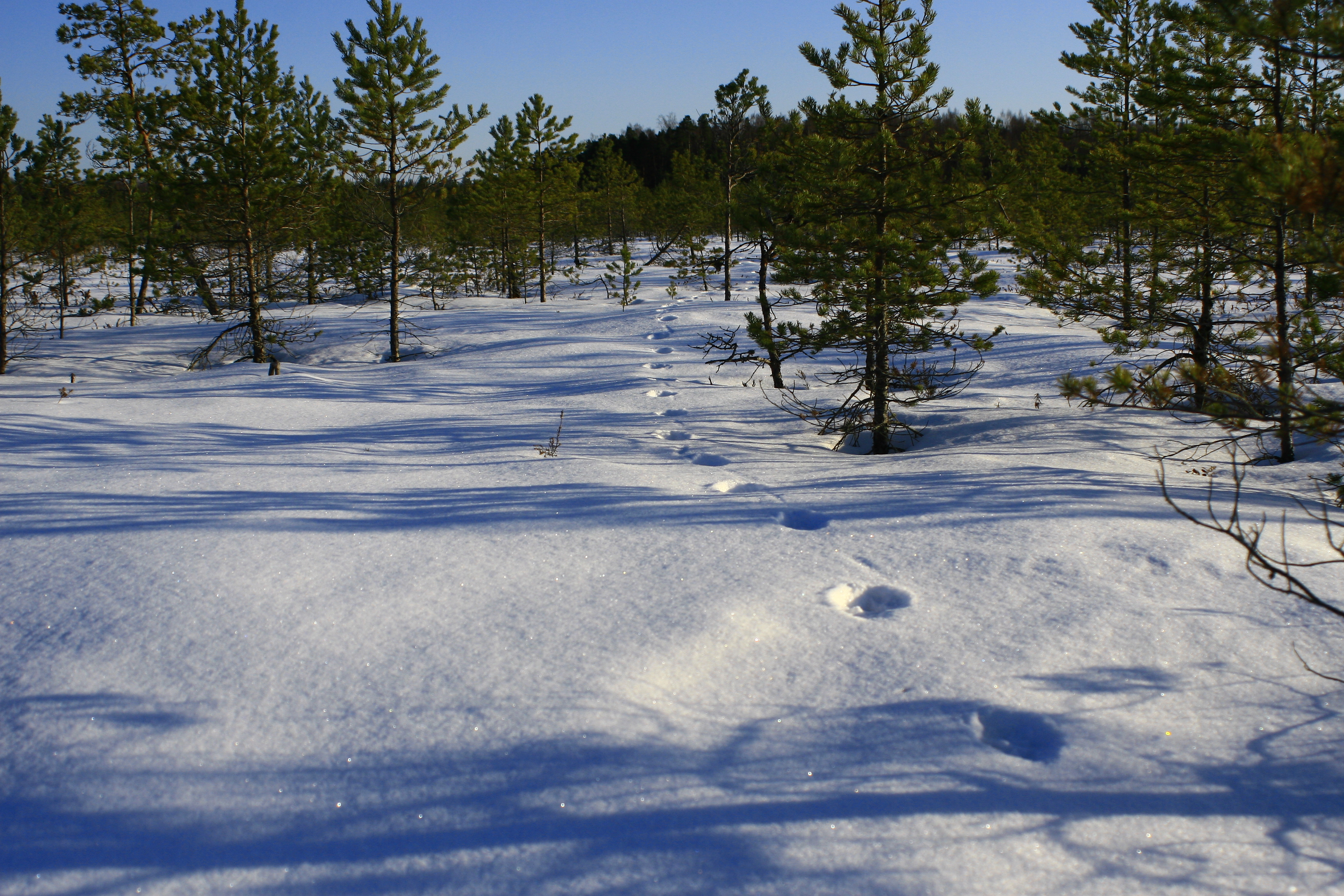
At the end of winter, foxes and hares have their mating season. During this time, hares behave very loudly, especially at night. White hare traces may be found in the forests and marshes, and traces of the grey hare - at edges of forests. "Hares like chewing tree bark. For example, if a twig of an apple-tree breaks off, the hare will straight away be there - to chew off the bark of the twig, not to eat apples," says expert Uģis Bergmanis.
For security reasons, the winter coat of wild animals is lighter in colour, it is thicker and with denser, longer hair. Lynxes, foxes, white hares and wild martens have hairier soles of their feet during the winter season.
Deer and roes in winter move around in herds, mainly because it is safer and easier to get feed. In March, deer start to shed their antlers. They are heavy - they weigh up to 10 kilograms. In summers, elks usually stay near water bodies, eating a variety of aquatic plants, while during the winter season, they eat the so-called hard feed - bush branches and tops of young trees, thus damaging forest saplings and mature stands. If deer chew off only tree buds, elks are able to break off the entire young tree. Everything is good for eating - from pine and spruce shoots, to tree bark, aspen and ash sprouts.
When searching for food, roes and deer are keen on staying in fields of winter crops enjoying sprouted rapes and rye sprouts. Besides, they really like orchard fruit. Also, raccoon dogs and badgers will be happy to feed on apples. Raccoon dogs are considered to be partial winter sleepers - they hibernate only when the temperature is low.
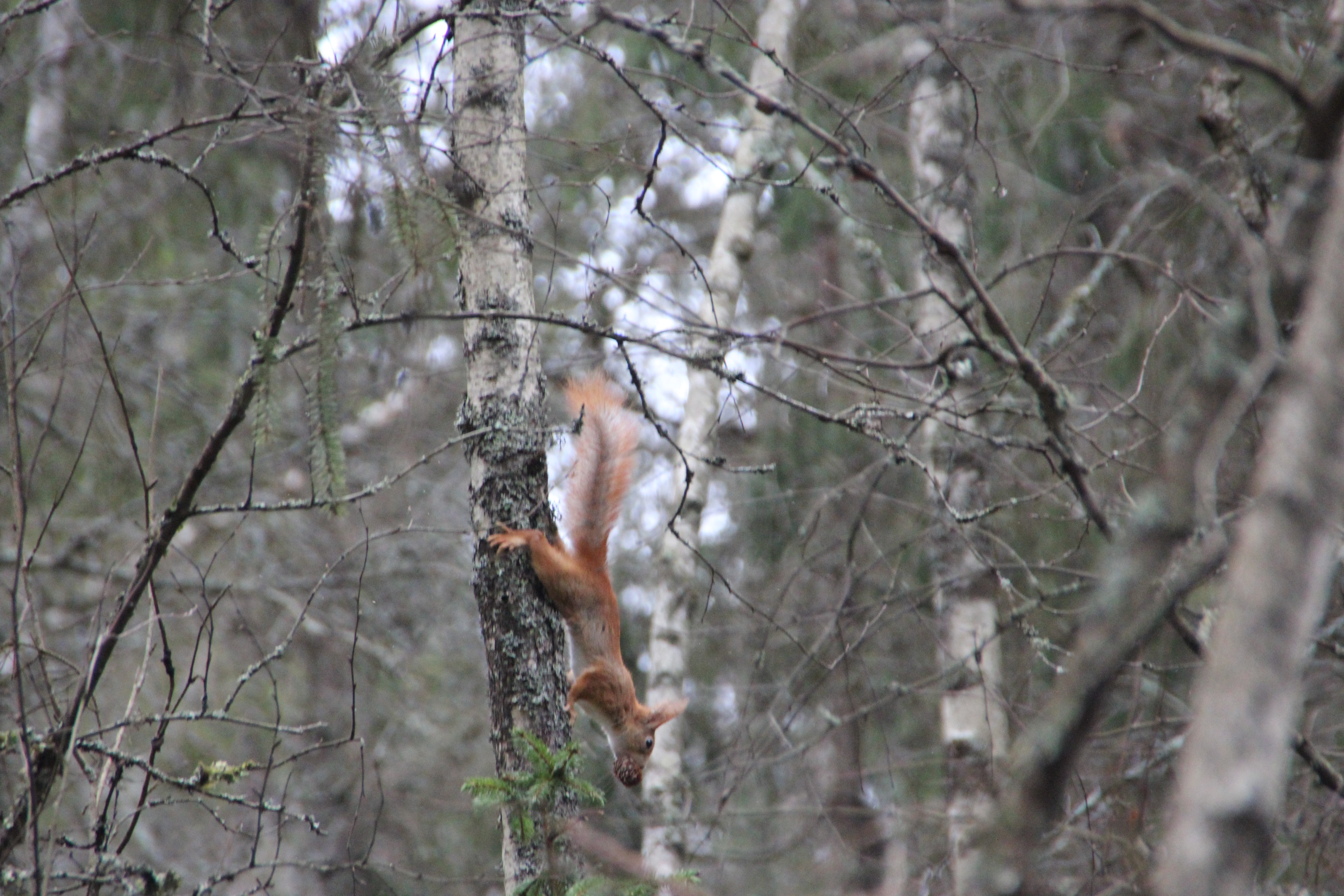
"After many years of break, thanks to the cone crop growth, more and more often one can come across footprints left by squirrels. They feed mainly on coniferous seeds, by gnawing them from pine and spruce cones. The squirrel winds, moves with medium-long jumps, putting its hind legs relatively close together. Its footprints are almost parallel to each other," says the expert.

